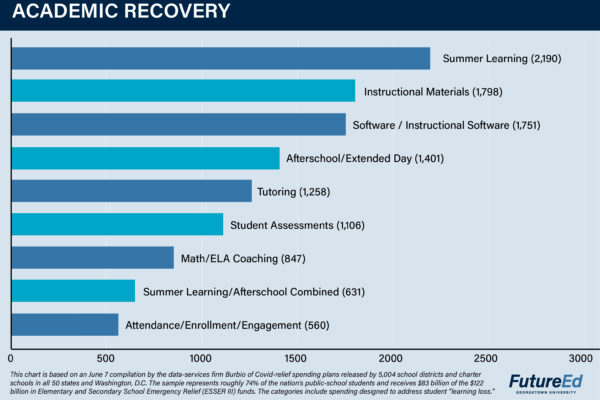FutureEd tapped a database compiled by the data services firm Burbio to assess spending on the federal Covid relief aid allotted in the American Rescue Plan. The current analysis, updated on June 7, includes spending plans submitted by more than 5,000 local education agencies teaching roughly 74 percent of the nation’s public-school students and receiving $83 billion of the $122 billion in Elementary and Secondary School Emergency Relief (ESSER III) funds. Most of the local agencies in the sample are school districts. The charts reflect the number of school districts and charter organizations planning to spend on the most common priorities and related categories. We will update these charts as Burbio expands its database.
School Staffing 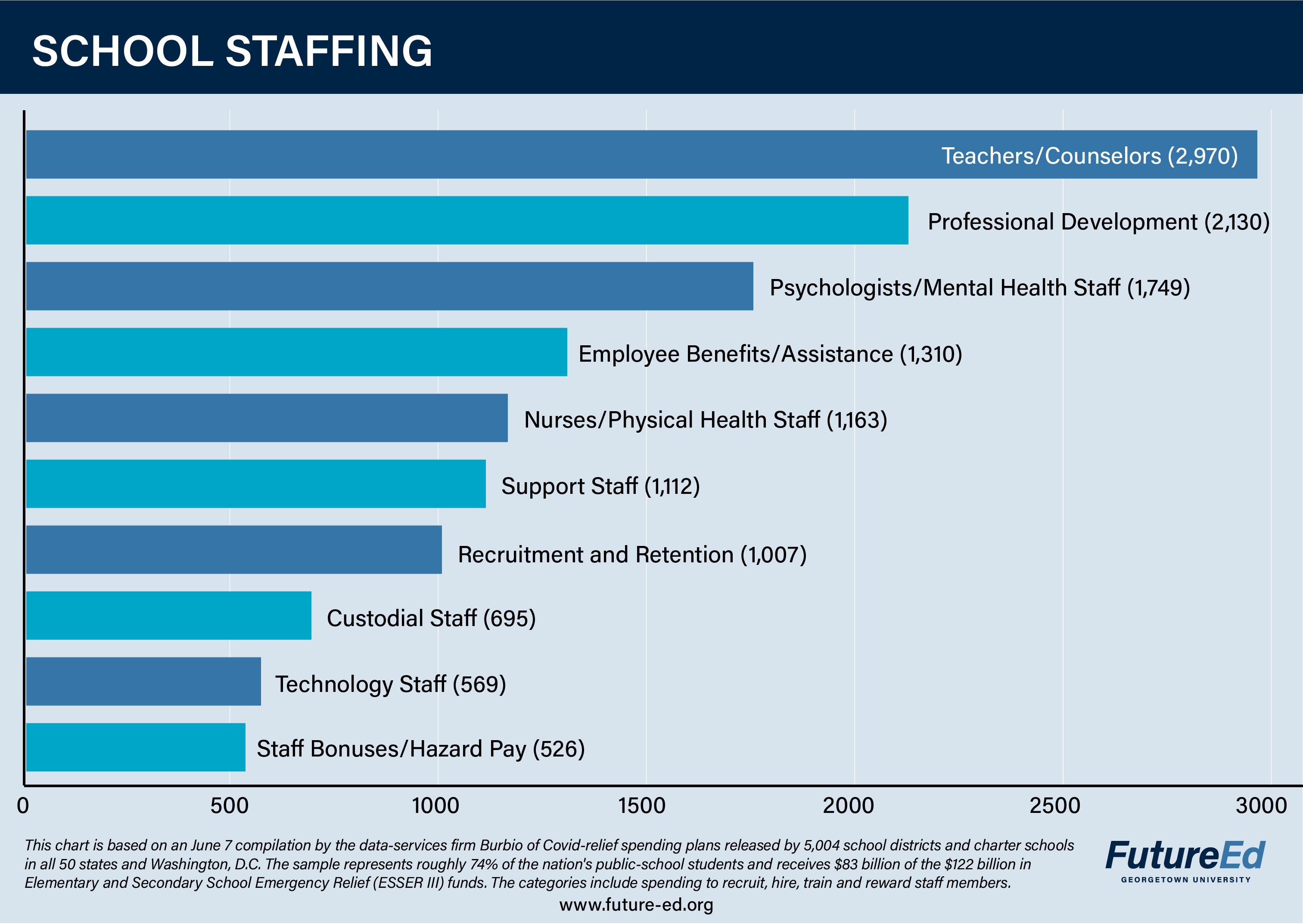
About 60 percent of school districts and charter schools across the country are planning to put their Covid relief funds toward hiring or rewarding teachers, academic specialists and guidance counselors. The spending emerges as the highest priority in each region and in districts at all poverty levels. In addition to academic staff, local education agencies are hiring psychologists, custodial staff, and technical staff. And they’re investing in efforts to recruit and retain staff, including bonuses.
See our school staffing resources
Academic Recovery 
Summer learning and afterschool programs emerge as the top strategies for helping students recover academically from the pandemic’s impacts. Nearly half the districts in the sample plan to spend Covid relief money on summer programs, and about a third will pay for extended learning time after school. Tutoring is another popular approach to giving students more time, and many districts plan to invest in new instructional materials, software, and student academic assessments.
See our academic recovery resources
Mental and Physical Health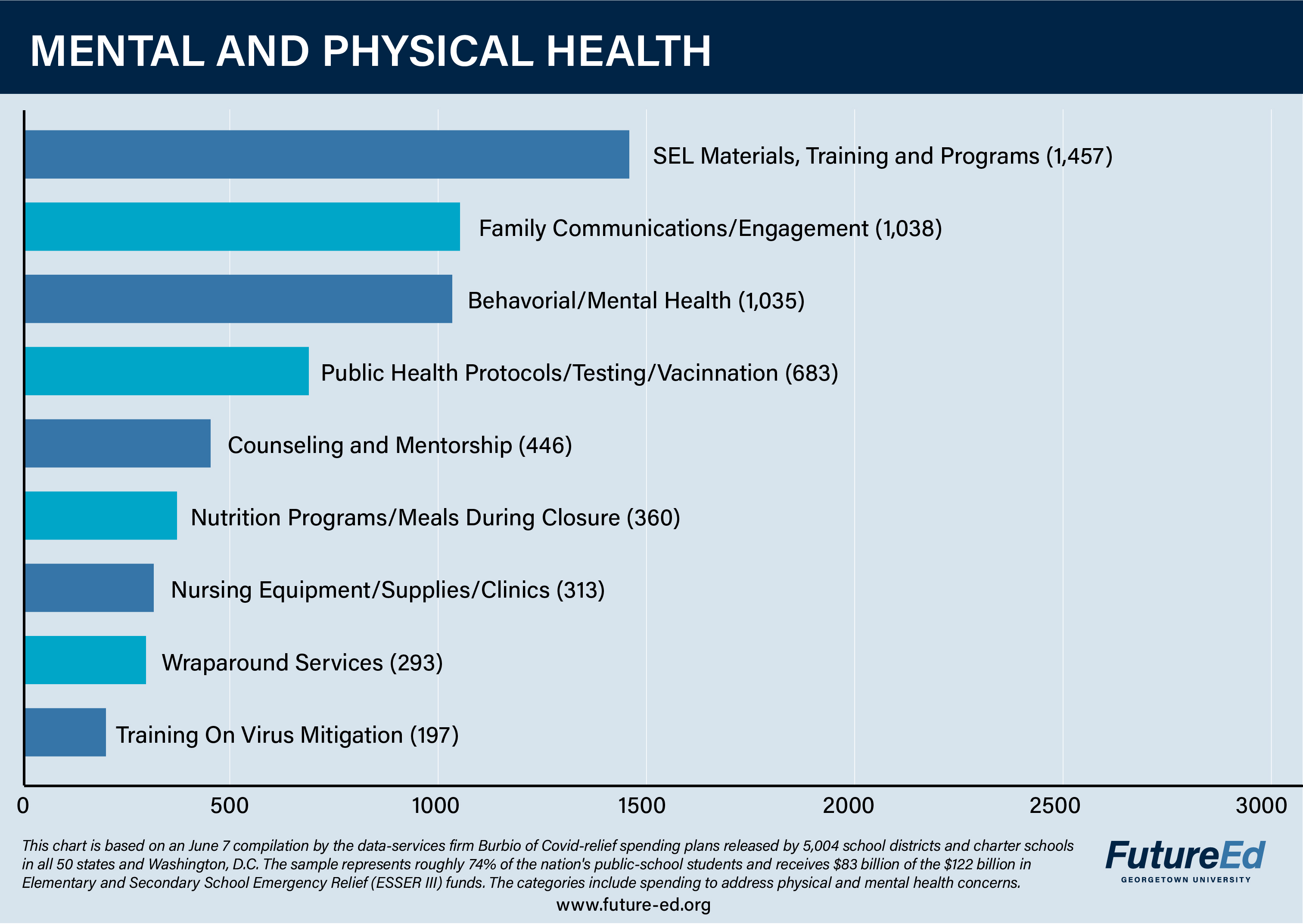
Social-emotional learning and student mental health are key priorities as districts and charters work to help students recover from the isolation and trauma of the pandemic. Nearly a third of the local agencies list spending on social-emotional learning curriculum, materials or training. Also, more than a third plan to hire psychologists or mental health professionals, included in the staff chart. Physical health is also a priority with spending on health protocols and hiring nurses.
See our mental and physical health resources
School Facilities and Operations 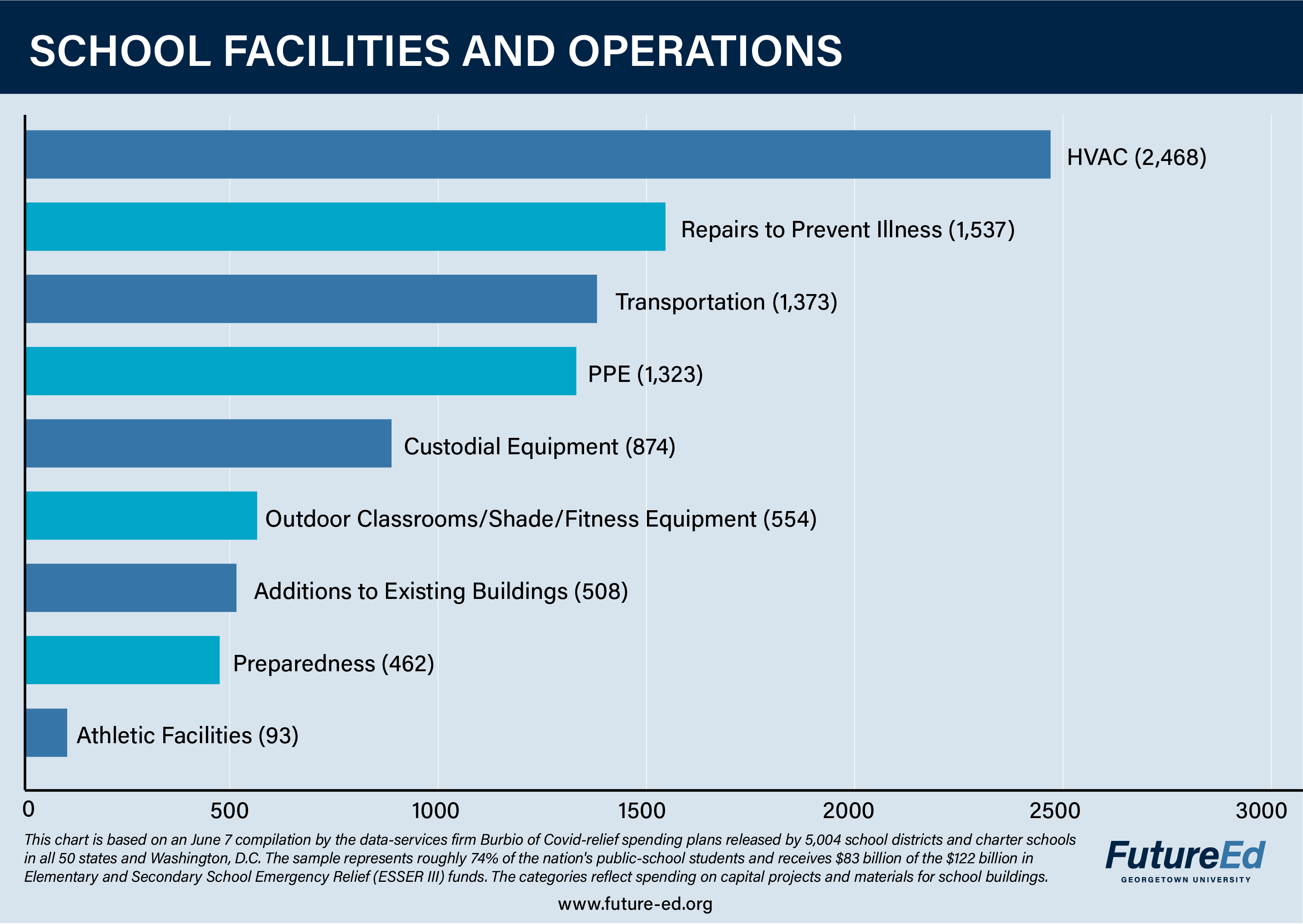
Among the most expensive priority for districts and charter schools is improving ventilation and upgrading heating and air conditioning systems, an approach that about half the district in the Burbio sample plan to pursue. Some are investing in repairs to prevent illness and additions to existing buildings, while others plan to spend on personal protective equipment and the apparatus for outdoor classrooms.
See our facilities and operations resources
Technology 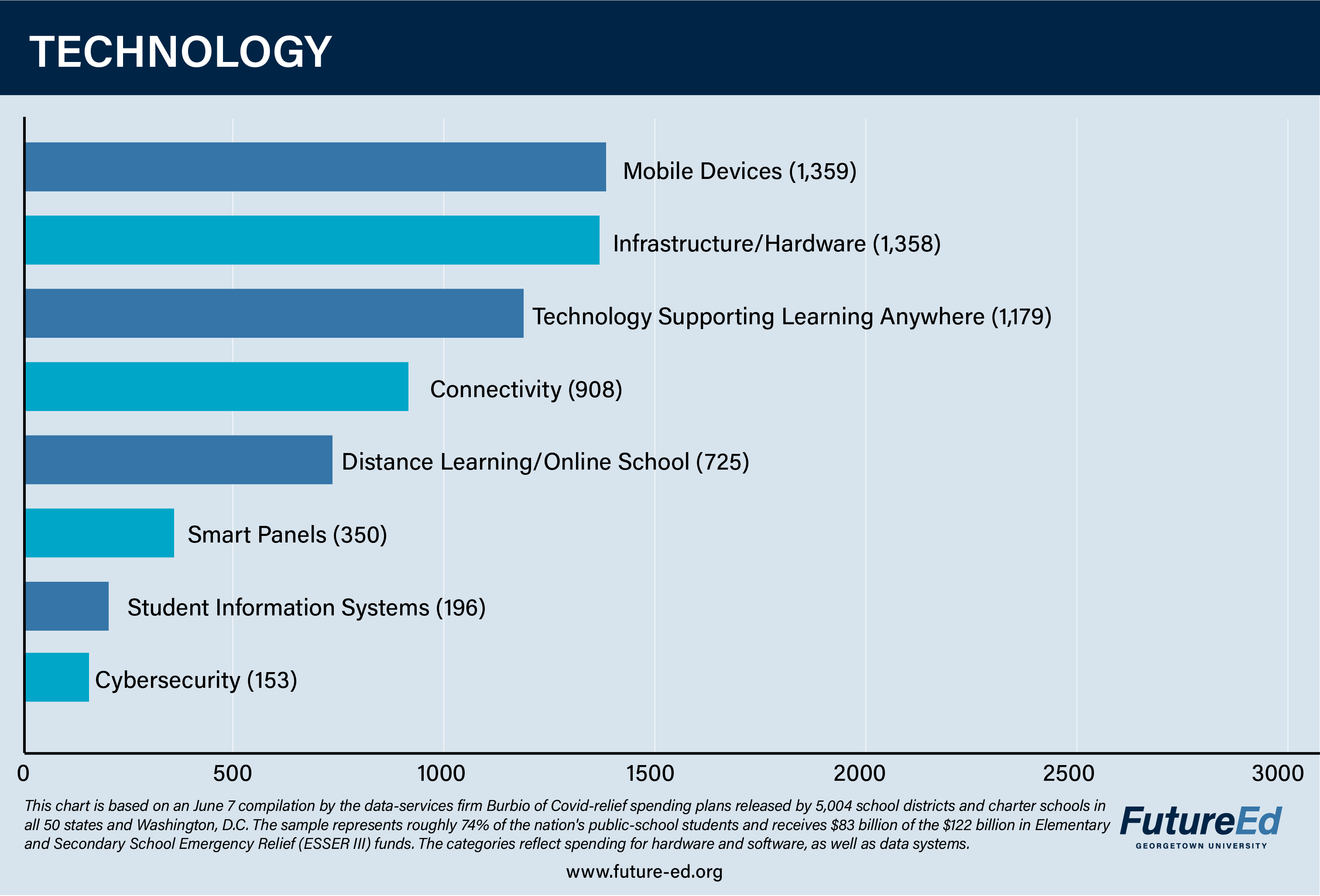
Remote instruction and technology remain key investments despite the widespread return to in-person school. Across the country, about a quarter of districts and charters in the sample list spending on student mobile devices, and others plan to pay for “technology that supports learning and enables students to learn anywhere,” plan to invest in internet connectivity, virtual models, online school or distance learning.
Read More:
Read our analysis of spending on school mental health professionals
Read our analysis of spending on summer learning
Read our analysis of spending on tutoring
Read our breakdown of financial commitments
Read our analysis of trends by district poverty level
Read our analysis of city, suburban and rural trends
Read our analysis of regional and national trends
Listen to the podcast: What are Schools Doing With Their Covid-Relief Dollars
Read our analysis of state spending plans
Read AASA’s survey of district leaders
Find district and charter plans here
